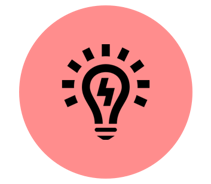
 Platforms that automate marketing and collect contact data are helpful to marketers, naturally. But did you know marketing automation has immense value for sales teams, too?
Platforms that automate marketing and collect contact data are helpful to marketers, naturally. But did you know marketing automation has immense value for sales teams, too?
By using the marketing data collected on your leads, you can craft a sales message that has a higher chance of receiving a response. And more responses mean more opportunities, sales calls, and deals closed.
In traditional sales, reps are driven by a “cold call” mentality. Every outreach looks the same, sometimes with slight personalization based on what the rep knows about the company. But imagine the value if each outreach was personalized to the lead — and if you knew:
By adapting your outreach, your outcomes will be more favorable. But this is only possible with the richness of marketing data and the inbound sales methodology.
Lead data can come in several forms, and it is most helpful when your marketing team invests in a CRM tool such as HubSpot that accounts for all types: conversion and engagement data, contact data, and company data.

By reacting to the marketing data above in your outreach, you are already practicing the inbound sales approach.
The core tenets of the inbound sales approach are:
Inbound sales is a natural progression for the sales funnel when it comes to inbound marketing-generated leads. And by using lead data to inform your outreach, positioning, and follow-ups, you increase your chances of closing the sale.
by Jonathan Franchell, CEO of Ironpaper - For more tips and hacks: Need to remove a new line after h1 tags? Both web designers and SEO practitioners need to employ headline tags: H1, H2, H3 in several ways to improve web page structure and tag...

The Crowded Arena of the IT Marketplace Updated December 2024 The Information Technology (IT) landscape is experiencing rapid growth and intensifying competition. IT spending is projected to reach nearly 5.1 trillion U.S. dollars in 2024, a...

Updated December, 2024 The field of digital marketing is evolving rapidly in response to new technology and changing buyer expectations. To help career-minded marketers, we’ve rounded up the top 10 skills needed to succeed in the field. These are...

The marketing industry is transforming significantly due to generative AI and increasing market complexity. Gartner's prediction of a 25% decline in traditional search traffic suggests that the era of search engines is dying. AI tools, particularly...
